The unique landscape of Albufera Park borders the southern shores of the Gulf of Valencia. Imagine a picture perfect scene of infinite golden beaches sheltered by sandy dunes and pinewoods. A vast lake which mirrors the Mediterranean sky, a place where waterfowl play in the bulrushes and thousands of birds take flight at the twilight hour, winging their way against a vivid orange sunset. Rice fields surround a fishermen’s village where you can go boating along the meandering canals, and taste the best paellas in Spain!
Only 10 kilometres south of Valencia city, Albufera lagoon and dunes can be visited on a day trip from anywhere in the region. However, the ideal way to explore the beautiful nature reserve is to stay locally for a few days. Here’s our suggested itinerary, what we actually did during a three day break in El Perelló (a conveniently located, small seaside town), along with some fascinating facts about Albufera Natural Park… the lake, dunes and rice fields. Discover the top sights to see, the best restaurants and local cuisine, where to stay in Albufera and how to get here.
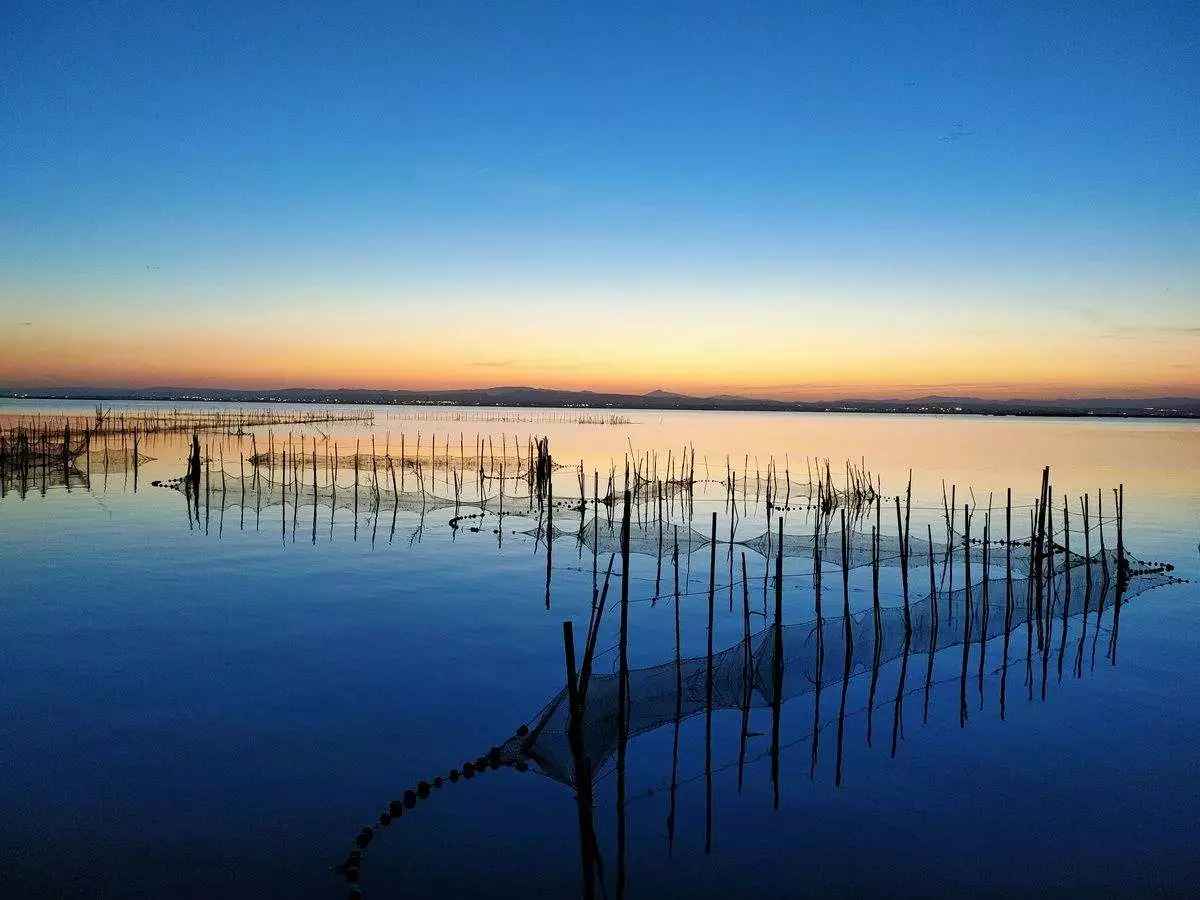
Valencia Albufera Park
Albufera means lagoon in Valencian, the word derived from the ancient Arabic ‘al-buhayra’ which translates to ‘small sea’. Historically home to a fishing community, this was originally a saltwater lagoon fed by the sea. During the 17th century flood waters from River Júcar and River Túria were used to irrigate rice crops, affecting the salinity of l’Albufera which eventually evolved into a freshwater lake. Nowadays, the Albufera water flow is regulated by floodgates on three artificial sea channels (the ‘golas’ of Pujol Nou, Perellonet and Perelló), and a system of irrigation canals streaming from the rivers. The delicate ecosystem is balanced to preserve fauna and wildlife, to maintain the rice crops and fish catchment area.
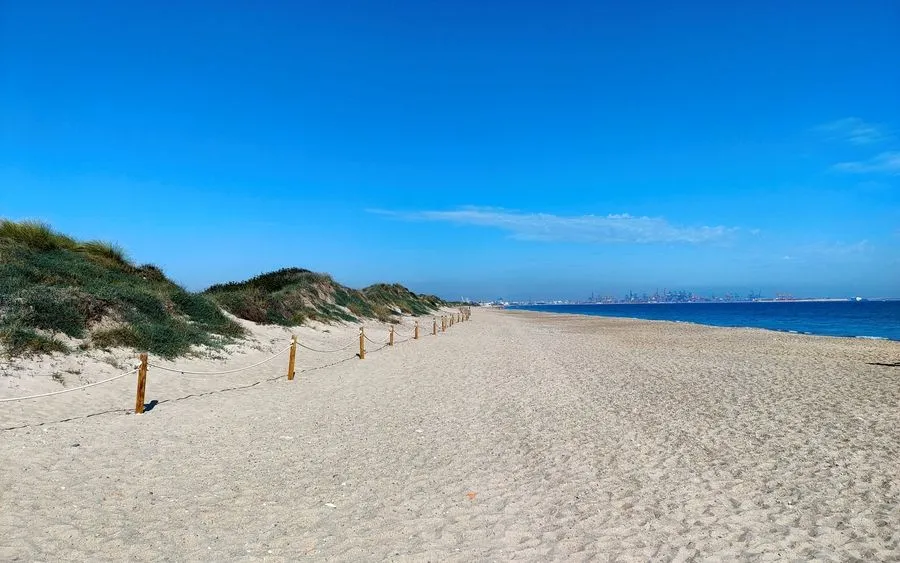
Parc Natural de l’Albufera de València nature reserve covers some 21,120 hectares, which is a pretty big space. There are three distinct areas of interest to explore, La Albufera (lake), La Devesa (sand dune beaches and pinewoods), and El Marjal (marshland and rice fields).
Historic Valencia city, and the famous ‘City of Arts and Sciences’ Oceanographic complex, are nearby must-see visits too. There are lots of water sports activities along the coast in summertime, extensive cycle paths and walking routes across flat terrain, as well as a host of amazing restaurants! You could easily stay here a week or two without getting bored.
If you’re looking for somewhere to combine with a vacation in Valencia, our guide to Alicante and the Costa Blanca or this Costa Brava road trip itinerary may be of help.
Albufera Lake
Albufera lagoon is the biggest lake in Spain with a perimeter measuring 23.9 km and an average depth of 1 metre.
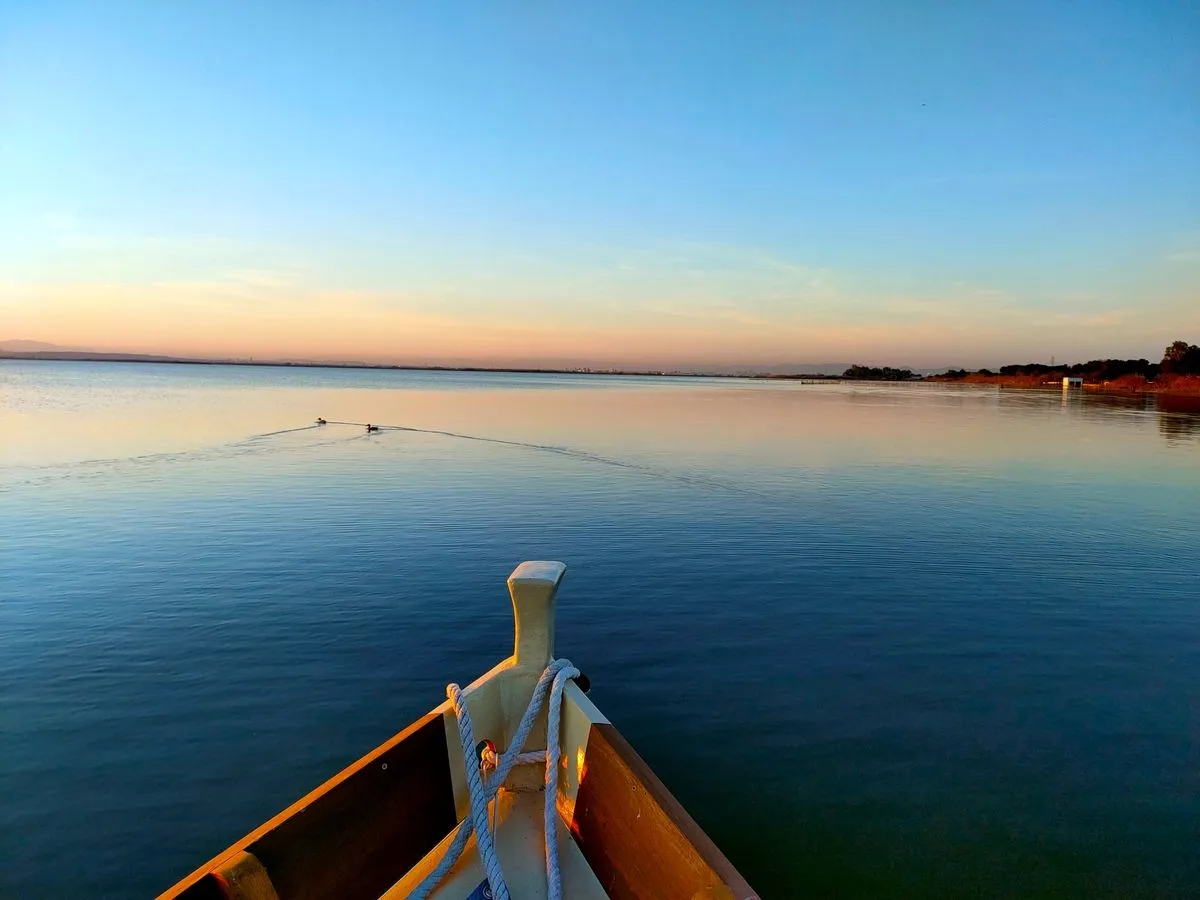
Millenniums ago, the Gulf of Valencia washed much further inland than today between the Túria and Júcar river basins. Over the centuries, sediments partially filled these estuaries and a vast saltwater lagoon was formed separated from the sea by sand plains and a marshy coast.
From Roman times to the Middle Ages salt mining, fishing and hunting were the traditional occupations. Quays were built in El Palmar, Catarroja and Silla, where the local fishing communities still live today. In the 1500s, marshlands around the ‘albufera’ were irrigated with river water and rice plantations were farmed in the shallows, the paddy fields gradually gaining more land from the lake until it diminished considerably in size.
Wildlife in Albufera Natural Park
Wildlife in Albufera natural Park is abundant especially ducks and migrating wading birds who feed on fish and rice grain. More than 350 types of bird visit the l’Albufera each year, many of them migratory, 90 species breed here.
Apart from thousands of gulls, you’ll see herons, egrets, waders, and various species of duck. Ibis, cormorants, terns, avocets, marbled teals, kingfishers, kites, and flamingos, according to the time of year.
Raco l’Olla Visitors Centre
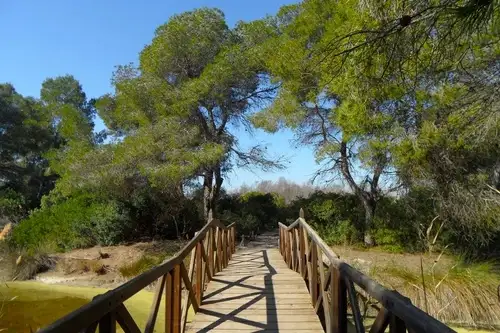
Find out all about the nature reserve, the wildlife and history of the Albufera, at the visitors’ centre. An ecotourism destination for families, there’s an easy woodland trail here suitable for even the smallest of children. See the short documentary and exhibits on show, climb the stairs to the lookout tower for panoramic views, then walk to the wooden observation cabin 400 metres away to quietly watch ducks and other waterfowl on the lagoon. Information panels describe the species of wild plants seen in the undergrowth on the way.
Centro de Interpretación Racó de L’Olla is open every day 9am until 2pm. Free entrance and parking. Dogs are not allowed. To get there, take the signposted turn off the CV-500 towards El Palmar, and the interpretation centre is some 50 metres up the road on the left-hand. Bus lines 24 and 25 stop nearby at the crossroads.
Fishing in l’Albufera Lake
The traditional wooden vessels look like rustic little gondolas punting down the muddy canals. The typical ‘Albuferencs’ unroll their sails for fishing on the lagoon and the tourist boats are slightly bigger motorised versions. Three methods are practised in Albufera Lake by the local fishermen association:
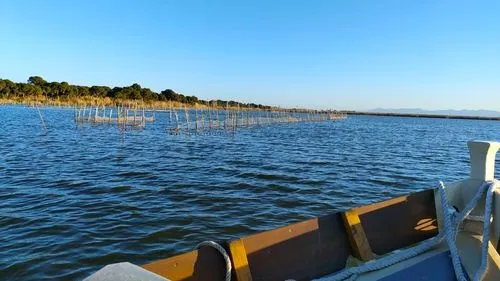
1. ‘al redolí’ – around the edge of the lagoon, in irrigation canals and sea channels. Each fisherman has their own patch, allotted each year by draw. Sturdy nets are strung across stakes to block fish heading for the sea each evening. Turning around eels get caught in conical nets, which are hauled in at daybreak.
2. ‘la pesca en companyía’ – groups of some 10 boats, with two men in each, go out onto the lake during the day to fish with nets. The catch is divided equally.
3. ‘al involant’ – carried out on the western part of the lagoon at dusk or dawn, where licensed fishermen cast floating nets with lead weights fastened between two canes.
A morning fish market is held in El Palmar Monday to Saturday (April to October) where the local fishermen sell their catch which includes fresh eel, bass, mullet and crab depending on the season.
*Private fishing is not allowed in the lake
Albufera Boat Tours
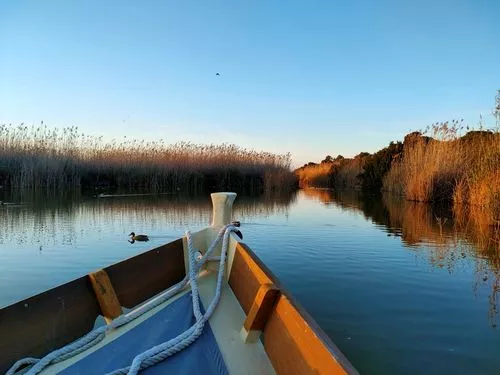
A boat trip onto the Albufera Lake is the best way to appreciate the beautiful environment. The most popular excursions onto the lake are from Gola de Pujol and El Palmar.
Tour boats depart hourly from the wooden piers at Mirador de Pujol, near El Saler dunes, for only 5€ per person or 6€ the sunset cruise. In El Palmar village, there’s a choice of trips on smaller boats leaving the canals, which are often offered with a set rice menu in a local restaurant. Portet de Sollana is a lesser-known setting with a quay out in the rice fields at the southern end of the lake.
On the western shores of Albufera, lagoon tours leave from the small historical canal ‘port’ in Catarroja (Valencia metro stops in the town), and from Silla although the docks in this busy town are less picturesque.
Sunset Boat Trip in Albufera
To end the day, enjoy the most amazing sunset in Spain over Albufera Lake. Take a sunset cruise from the quay at Mirador de Pujol – this leaves an hour or so before the sun sets. A long low wooden canoe takes you out onto the lake with the helmsman pointing out the passing sights – reeds where waterfowl breed, canes and nets strung up for traditional fishing, ibis taking flight…
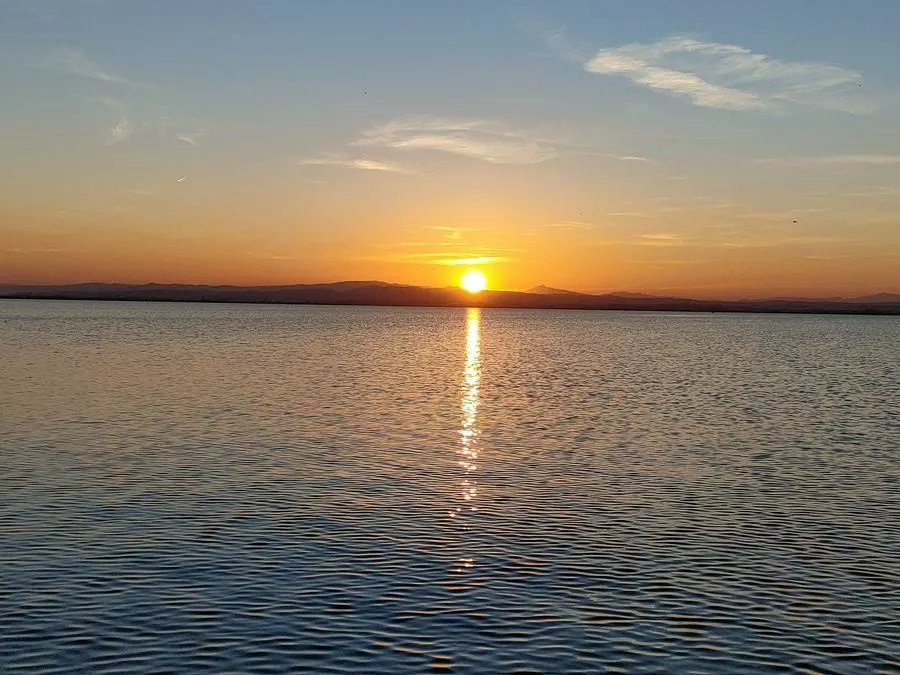
The friendly boatman gives a real insight into local history and traditions, as well as the best birding viewpoints and the most likely time to spot the flamingoes in flight, for example. The boat skirts the protected breeding grounds and finally starts to head back through a cane-lined waterway busy with mallards, those speckled brown and green-headed ducks. Out on open waters again, the engine cuts just as the sun starts to sink and nature’s colourful display paints the horizon impossible hues of amber, orange and pink.
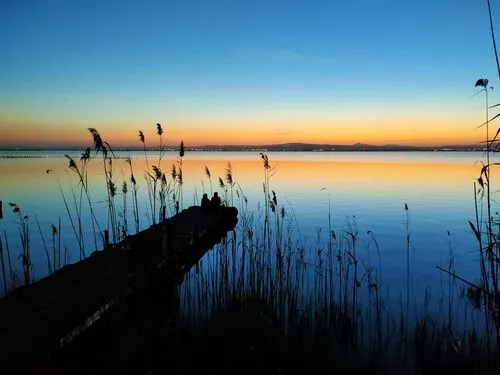
Tip
Make sure you have plenty of battery on your camera or phone to capture the extraordinary scene, which continues even after you’ve returned to land. In fact, the show goes on through the deep blue twilight hour when the blazing colours are even more startling. Pujol lookout is a favourite place to watch the sunset, so bring some cool cava to sip, sit on the quay, relax and savour the unforgettable experience.
* It costs 6€ pp for the sunset cruise on a boat with other day trippers. However, private cruises are available booked in advance.
Albufera Beaches
La Devesa Dunes and El Saler Beach
La Devesa is basically an immense sandbar, some 10 km long and 1 km wide, with a network of boardwalks and cycle paths skirting sand dunes of great ecological value. Known as the ‘restringa’ in Spanish, this sandy shoreline stretches for 30 kilometres, from Valencia’s ‘doggy beach’ Playa Pinedo by River Turia right down to Playa Dossel in Cullera.
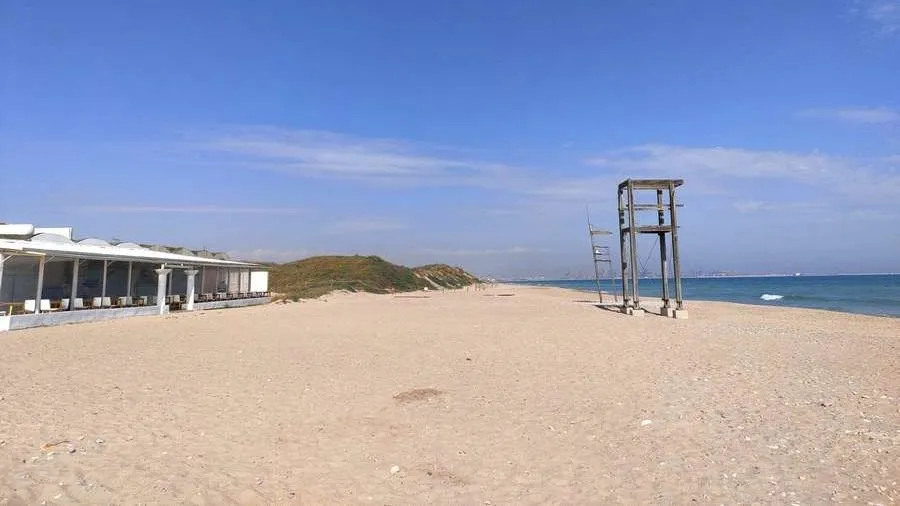
The easiest way to get to Devesa dunes is from El Saler town on the Albufera coastal road where there is a stop on the nº 25 bus route (El Perelló-Valencia), and a parking area at the entrance to El Saler protected park. The pleasant walk through pine forest has information boards to explain the local flora and fauna (an official audio guide can be downloaded on your phone). El Saler beach is just a kilometre away at the end of the avenue.
Two large beachside restaurants with sea view terraces flank the entrance to the sands (there’s a car park here too). Sand dunes protect a wide open beach bathed by the clear blue waters of the Mediterranean Sea.
Restaurant Dehesa Jose Luis is open 12 pm to 5pm, Thursday to Sunday, and local holidays). Specialising in rice dishes and seafood, tapas, etc. A la carte or ‘menu of the day’ (30€).
Restaurante La Dehesa Joaquin Castelló specialises in Mediterranean cuisine, traditional paella, seafood, tapas, etc., also ‘bocadillos’ filled bread rolls.
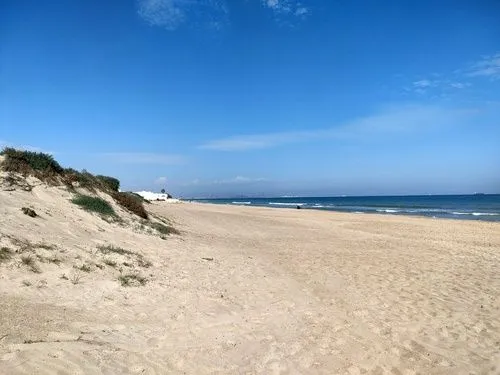
Valencia’s subtropical climate means that the weather is warm throughout most of the year. Even the winter months are mild with lot’s of sun filled days although the sea will be chilly.
Even though pets aren’t allowed on the actual beach it’s fine to bring your dog for a walk along the trails if kept on a leash.
You’ll pass another large beachfront restaurant and parking zone. Duna Saler Arroceria specialises in Valencia rice dishes (open 10 am to 8 pm, closed Mondays).
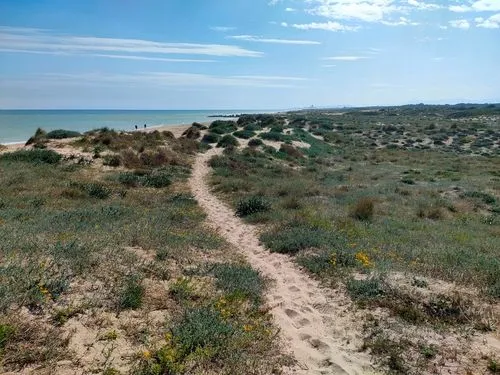
Next you’ll come to El Saler Parador Hotel and golf course, several apartment blocks set back from the coast, and a small nucleus of whitewashed houses (all constructed before La Devesa came under protection).
Heading down Garrofera beach (the beaches all merge into one) you can stroll across the sands to Gola de Pujol channel, or take the well-marked paths behind the dunes where there are a couple of picnic spots.
On the far side of the channel, the unpoiled loveliness of Devesa de Saler beach continues southward eventually joining Recati beach, El Perellonet and El Perelló.
El Saler is also a popular area for jogging and cycling. In fact, the whole area can be reached by car along lanes which connect to the main road.
Tip
Check restaurant opening days and times, and reserve a table in summertime as these can be very busy, particularly at weekends.
Gola de Pujol
The Gola de Pujol is particularly picturesque, a man made channel which regulates water into the lake. Walk or cycle here from El Saler beach then cross a small bridge, or alternatively take the path over the dunes from the Cami Vell de la Devesa some 700m away. There’s a car parking area opposite the quay on Albufera lake (bus also stops here). This is a lovely walk past Estany del Pujol, a small lagoon where birds breed.
Tip
Come here in the afternoon and then take the sunset boat trip from the pier at ‘Mirador Pujol’ viewing point over Albufera lake on the main road (give the boatman your name before starting off, and he’ll reserve a seat).
El Marjal Marshlands
Valencian Barracas – Traditional Dwellings
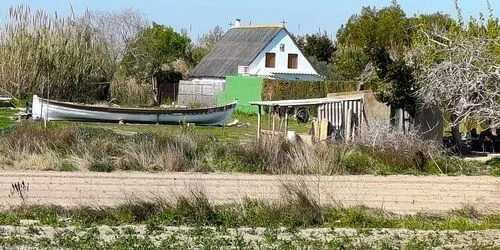
Valencian ´barracas’ are the original Albufera marshland dwellings, a low-walled rectangular structure covered by a tall steep roof covered with reeds, angled to resist heavy rains. Traditionally made of wood, mud and canes, most of these cute little homes were destroyed by fire in 1883.
Less than 30 ‘barracas’ remain today… Barraca de Los Guitarra in El Palmar village is a good example, others can be glimpsed across the rice fields or beside the lagoon.
Albufera Rice Fields

An all-time favourite, rice is the second most consumed cereal across the planet. Albufera’s unique microclimate and environment produces some of the best grains in the world, primarily Bomba, Albufera, Sénia and Marisma varieties under the Valencia Denomination of Origin.
Local families still farm rice the traditional way in ‘tancats’ (land gained from Albufera lake), centuries of ancestral knowledge and culture passing down through the generations. The natural process is aided by the latest production techniques and modern machinery.
Cultivation begins in November when fields are flooded to cleanse the soil of pests and bacteria. Floodgates are closed on El Perelló, El Perellonet and Pujol channels causing a backlog of water – the so-called ‘Perellonada’. Two months later, the floodgates are opened again and the water drains out to sea.
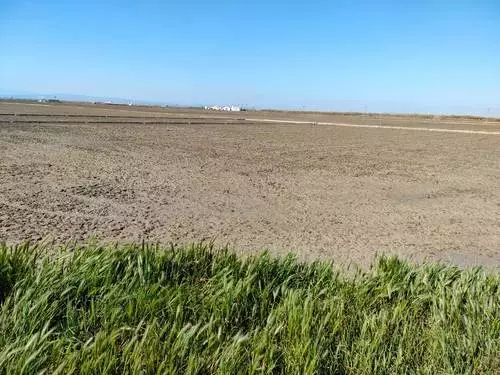
Next step is the ‘fangueo’ when tractors plough the land mixing stubble and watery mud into a natural fertilizer.
Sowing starts in May, when rice seeds are scattered by hand. In June, clusters of germinated seedling from greenhouses are hand planted to fill in sparse gaps. The manual weeding of rice fields takes place in July, to ensure a chemical-free 100% natural grain.
Harvesting at the end of summer and beginning of autumn is carried out by machine, edges of the fields trimmed manually. Finally, the grains are sun-dried, milled and packaged. Gluten-free rice drinks such as craft beer or cream liqueur are also elaborated.
El Palmar Village
El Palmar is a fishing village surrounded by rice fields out by Albufera Lagoon. Originally an island inhabited by the Moors in the Middle Ages, it wasn’t until the 18th century that fisher folk from the surrounding lagoon towns started to build their homes there. In the 1930s, three small bridges were constructed over the canals, and access roads were made.
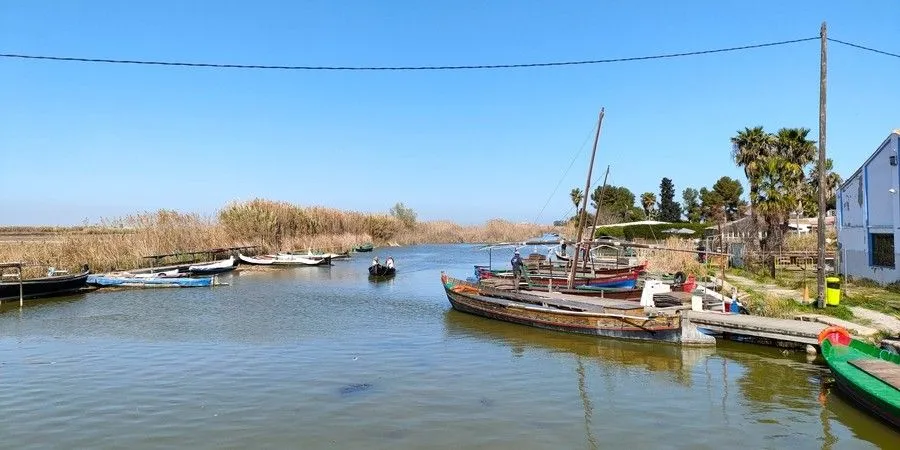
The main village layout remains remarkably similar today with two rows of adjoining houses flanked by a canal either side and a central street down the middle where there’s a small square and the parish church.
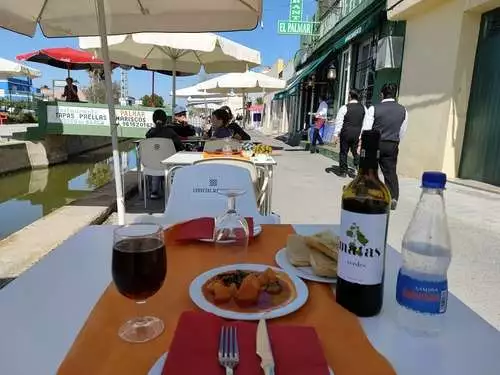
Although fishermen and farmers still live or work here, El Palmar is essentially the place to go for authentic Albufera cuisine, the majority of dwellings turned into restaurants. While the outsides are unpretentious with tables on the pavement beside the canals (this is the best place to sit and soak in the ambience), insides are modernised and smart. Not surprisingly, paellas are the speciality.
Tip
Visit El Palmar during the week to avoid crowds. A popular place to dine midday, at weekends the village is thronging with people from Valencia city and day-trippers, so roads are jammed and the restaurants full.
Winter and summertime are the most picturesque, when the flooded rice fields mirror the sky or are vivid with green shoots. Springtime the ploughed land resembles mudflats, or after harvesting when the landscape appears brown and dry.
How to Get to El Palmar
The turning to El Palmar is between El Saler and Perellonet on the CV-500 (the coastal road that runs southwards from Valencia to Sueca, skirting Albufera Lagoon).
Valencia Paella and Albufera Cuisine
A branded Denomination of Origin Rice from Valencia, Albufera rice is a cross of short-grain Bomba and medium-grain Senia, producing a pearly-white variety which absorbs cooking liquid flavours without become sticky… a basic in Valencian cuisine.
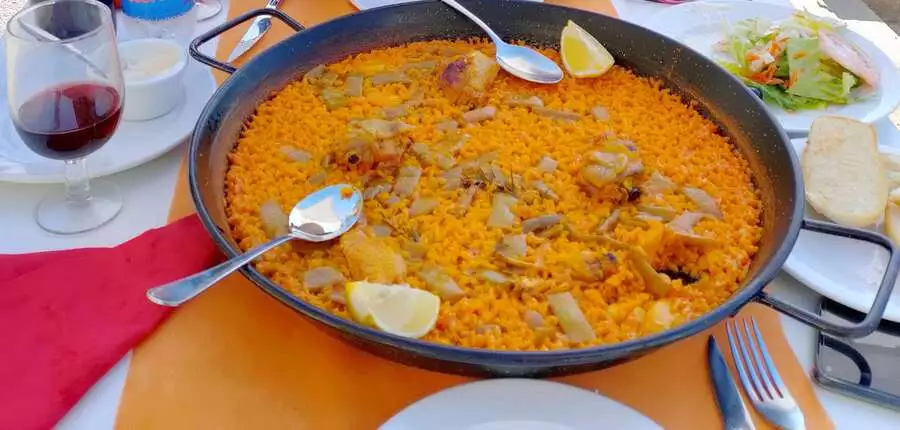
The quality rice cultivated in La Albufera is perfect for paella. Orchards provide citrus fruit and tomatoes, lettuce, garlic, onion, peppers, and tender vegetables that thrive on the sunny, well-watered fertile land.
This is true Mediterranean cuisine cooked with olive oil and using fresh healthy ingredients straight from the sea (or lagoon in this case), market garden vegetables and quality local meats.
Delicious hot starters include calamari, ‘clóchinas’ and ‘tellinas’ straight from Albufera’s sea coast. Clóchinas are Valencian small mussels and tellinas are tiny, smooth elongated clams, both are usually steamed open and served immediately.
Esgarraet is a yummy cold starter of oven-baked red pepper cut into strips, slivers of dry salted fish, and finely chopped garlic, drizzled with olive oil. Diced black olives and aubergine are sometimes added to the mix. Served with crusty bread.
Valencian oranges are the best in Spain, and there are lots of citrus orchards beyond the rice fields! The large sweet juicy Perelló tomatoes are cultivated in sandy soil between the lagoon and the sea. Both are tossed into seasonal salads made with freshly picked local lettuce.
‘All i pebre’ is an authentic local dish. The name means garlic and paprika, the condiments which flavour this eel and potato stew garnished with parsley. A touch of chilli gives a hot spicy kick. Served as a starter or main course, fresh eels from the Albufera are the star ingredient.
Paella is famous worldwide and there are dozens of variations. But did you known that’s Spain’s favourite dish originally dates back to 15th century Albufera?
Classic Paella Valenciana is made with Albufera rice, pieces of chicken and rabbit, green beans, ‘garrofó’ butter beans, paprika, saffron, tomato, garlic, a pinch of salt, virgin olive oil, and water, garnished with a sprig of rosemary and wedges of lemon.
Traditionally, cooked, served and eaten from a flat paella pan. Usually ordered for the whole family (minimum 2 persons), the steaming `paellero’ is placed in middle of your table, rich aromas wafting up, and everyone eats directly from the pan with spoons. However, the waiter will always offer everyone individual plates, as well as forks and knives to use.
‘Paella de Marisco’ seafood paella has a totally different taste, made with fish ‘fumet’ and ingredients such as king prawn, crayfish, calamari, ‘clotxina’ Valencian mussels, and red pepper.
‘Paella Mixta’ is a combination of Valencia paella with seafood – usually a mix of chicken, calamari, green beans, and king prawn.
Valencian vegetable paellas are wonderful and use tender seasonal vegetables such as artichoke, green beans, garrofó’ white beans, turnip, peppers, tomato, spring garlic and even wild mushrooms.
‘Arròs negre’ is another favourite rice dish along the Albufera coast. Basically a squid paella with fresh cuttlefish, calamari and prawns. Don’t let the inky colour put you off, it’s incredibly tasty! Accompany with ‘all-i-oli’ (garlic and olive oil mayonnaise).
‘Arròs a banda’ is the traditional fisherman’s paella. It may not look exciting, but the home-made stock of fresh fish and prawns creates a wonderfully flavourful rice. Squeeze a wedge of lemon juice over the rice to eat.
‘Arròs d’ànec i carxofes’ is a marsh duck and artichoke paella with Valencian ‘perona’ green beans, baby broad beans, wild asparagus, spring garlic and tomato…100% Albufera ingredients. The duck is usually boned.
‘Arròs del senyoret’ peeled seafood paella is so named as the señoritos/as of the posh upper-class didn’t want to get their fingers mucky licking the prawns!
‘Fideuà’ is a surprising Albufera special. Cooked in a paella pan, this version is made with vermicelli noodles. Prawns, mussels, cuttlefish and crayfish are added to hot fish stock sprinkled with cupfuls of fine pasta. Served moist as soon as the liquid is absorbed.
‘Arròs amb fesols i naps’ Albufera rice stew with turnips and beans is usually served in winter (recipe includes pig cheeks and trotters).
‘Arròs al forn’ is oven baked rice with pork, black sausage, chickpeas, potato, tomato and garlic cooked and served in a clay pot.
Restaurants around La Albufera, serve the usual paella ‘seco’ when rice is cooked to perfection, stock absorbed and the base slightly caramelised (the crispy ‘socarrat’), ‘paella melosa’ is a creamier version, while ‘arroz caldoso’ is more soupy and served in a pot.
Best Restaurants in Albufera
The best paella in Albufera is served in El Palmar. There are dozens of eateries in the village, these our our favourites.
Arroceria Maribel €€
Gourmet cuisine specialising in paella. 1 star Michelin.
Modern dining room. Waterfront terrace beside the canal.
Open lunchtimes until approx. 6.30 pm (kitchen open 12.45 to 4:15 pm). Closed Wednesdays, except holidays.
Address: C/Francisco Monleón 5, El Palmar 46012. Tel. (+34) 961 620 060 / 961 620 153.
Restaurante Bon Aire €€
Award winning restaurant specialising in traditional Valencian gastronomy.
Elegant dining room with views of the rice fields.
Open everyday lunchtime 1.30 pm to 4 pm.
Address: C/ Caudete 41, El Palmar 46012. Tel. (+34) 961 620 310 / 961 620 133.
Restaurante La Albufera €€
Typical Valencian cuisine. A la carte or reasonably priced tasting menu.
Smart dining room. Outside terrace by village square or beside a quiet canal.
Open Monday to Friday 10 am to 11.30 pm, Saturdays until midnight, Sundays until 6 pm.
Address: Plaça de la Sequiota 5, El Palmar 46012. Tel. (+34) 961 620 387.
Restaurante El Palmar €
Choice of classic 3-course rice menus (inc. wine, water or soft drink) o a la carte.
Smart dining room and terrace outside beside the canal. Reasonable prices.
Open every day from 9 am to 11 pm.
Address: Carrer dels Redolins 4, El Palmar 46012. Tel. (+34 961 620 162).
Where to Stay in Albufera
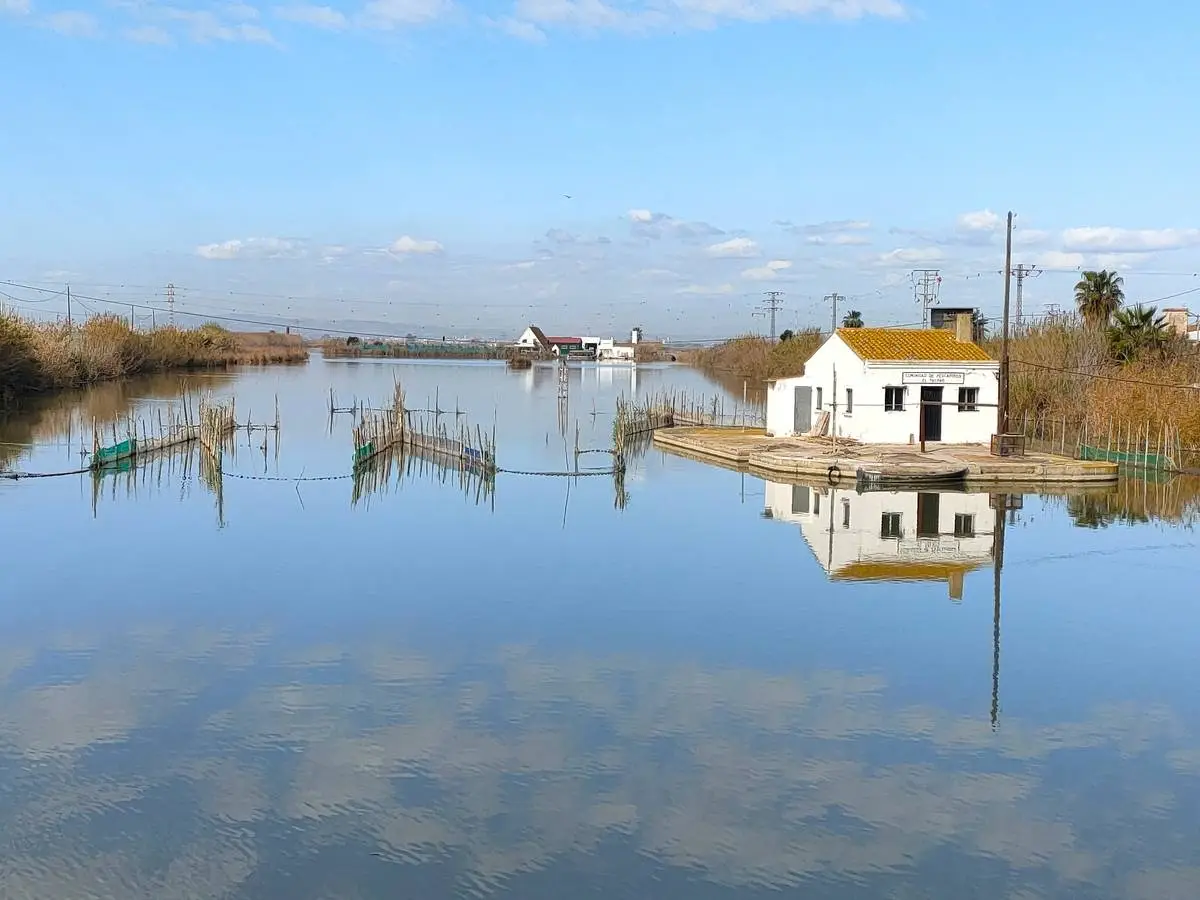
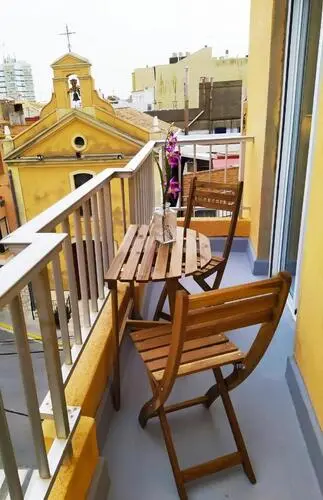
A few apartment blocks built in the early ‘80s are clustered around La Devesa beach, but fortunately l’Albufera became a protected nature park in 1986. The drawback is that there are few places to stay. Several small towns are within easy reach of Albufera, however holiday accommodation is mainly private apartments, the occasional camping ground, and the luxury El Saler Parador hotel. Cullera is another option but this busier coastal resort is 30 km away from the lagoon and the unspoiled dune-backed beaches.
Scrutinising Google Maps, I found a ‘hostal’ in El Perelló…conveniently located on the coast, close to the rice fields and Albufera lagoon. On further investigation, Hostal El Perelló turns out to be a real gem, a peaceful and immaculately reformed 3-storey town house, with private en-suite bedrooms, a shared kitchen with cosy dining room, and chill-out roof terrace, only two minutes walk from the beach.
The proprietors are a young couple from Czechia who gave up their high-flying careers to follow a dream… to open a guesthouse by the sea, a place where guests of every nationality could chat over coffee or a plate of pasta and glass of wine! Veronika and Aleš chose El Perelló in the heart of Albufera to start this new life.
El Perelló
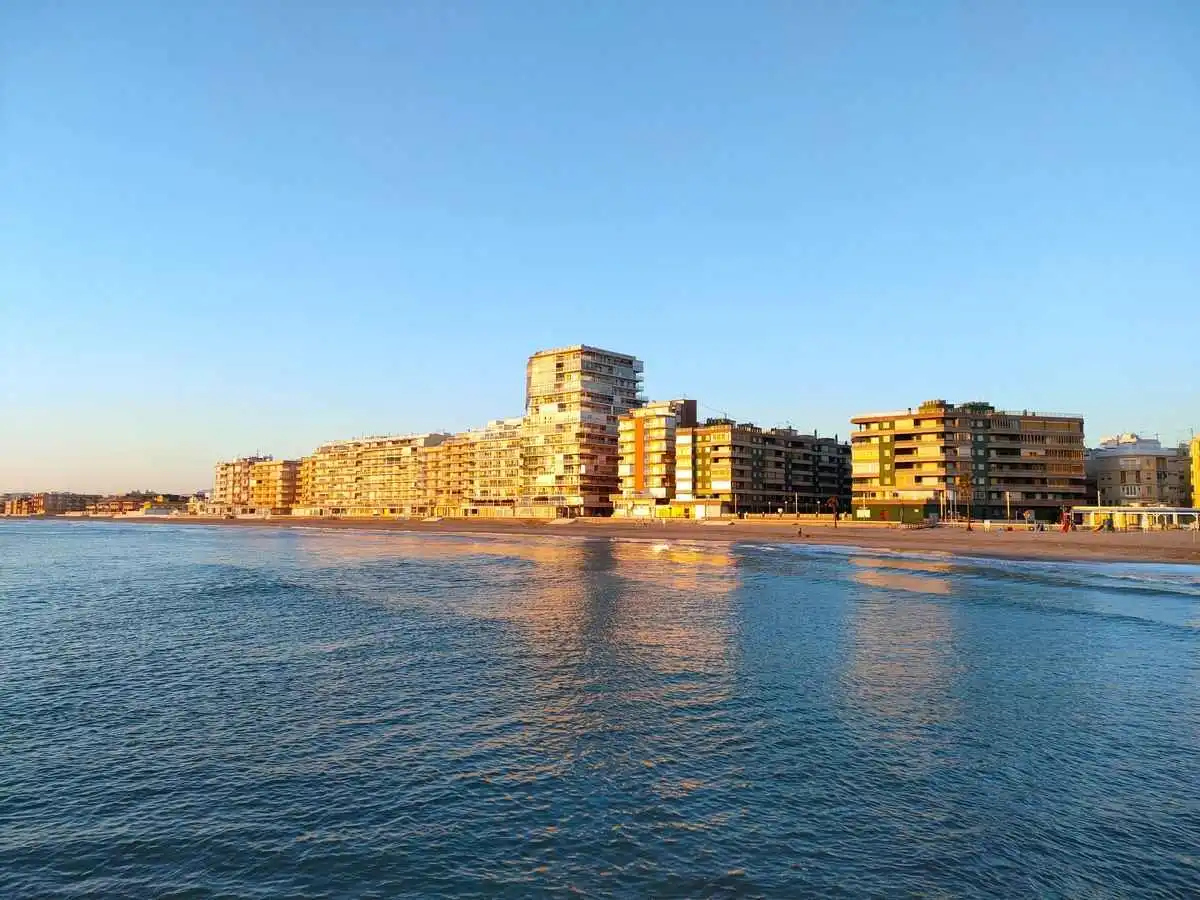
El Perelló was originally a hamlet of ‘barracas’ where fishermen and farmers of the Albufera lived in an idyllic spot between the sea and lagoon, hundreds of years before tourists discovered the coasts of Valencia. Way back then, a canal was cut through these lowlands to control water levels on the rice fields. In 1845, the village itself was founded and gradually developed as more people came to cultivate the fertile lands. First the church, then Gola de El Perelló channel, the emblematic suspension bridge, the harbour, and a nautical club as wealthy Valencians came down from the city for holidays. Eventually low-rise apartments were built along the seafront, and a promenade which connects to neighbouring resorts to the south.
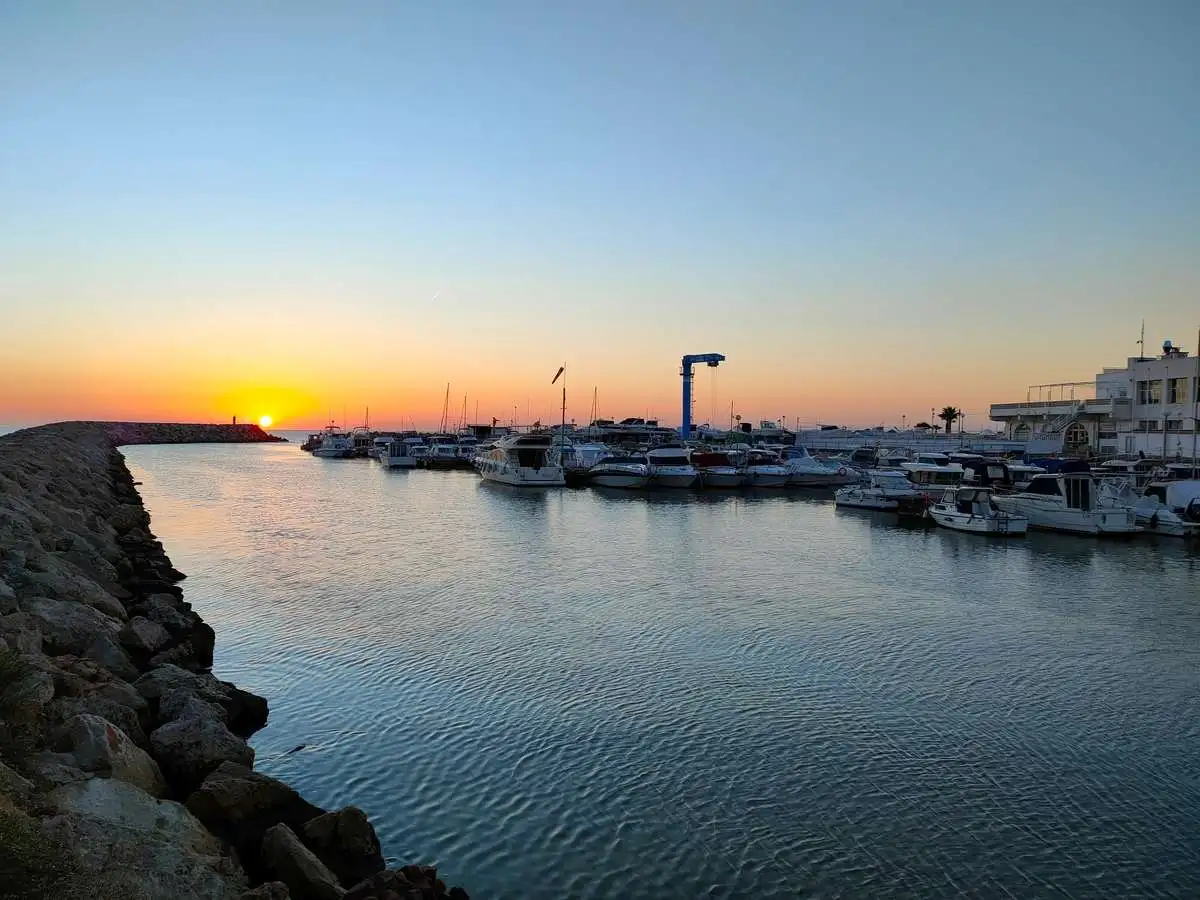
It’s a laid-back sort of place with a fabulous sandy beach and plentiful amenities – water-sports to do in summer, loads of eateries and good restaurants (open all year), and great traditional bakeries. Watching sun rise from the east over the Mediterranean Sea is an amazing experience too. You may even see dolphins surfing the sea! This small seaside town is eminently Valencian. The peaceful setting and friendly locals make a nice change from international vacation resorts. However, it’s the location between the ocean and lagoon -actually within l’Albufera nature reserve- that’s the deciding factor, what attracted us here.
Restaurants in El Perelló
From tasty takeaways, pizzerias or burgers, to authentic Albufera cuisine, there’s a varied choice of eateries in El Perelló. The summer ‘chiringuito beach bar, and traditional bakeries with home-baked pastries are must-do’s too. Surprisingly, some of the best restaurants in El Perelló are not on the seafront but secreted away in side streets, popular places where local folk dine.
Sauteéd baby squid with beans (salteado de chipirones con habitas) and seafood rice (arroz melosa de marisco).
Aubergines, zucchini, fava beans and potato are some of the fresh garden vegetables grown locally, along with fruits such as melon or watermelon. El Perelló tomato is the famous crop, a fleshy heart-shaped variety which flourish on sandy soil. In season from May to October, the ‘Tómate el Perelló’ gastronomic festival held thoughout June is a great time to taste them. Other culinary specialties are seafood and Albufera rice dishes.
Nas De Suro €€
Traditional Mediterranean cuisine with a modern touch. Paellas lunchtime only. Home-made deserts.
Open Fridays & Saturdays 8.30 pm to midnight, Sundays & Mondays 1pm to 5 pm, (closed Tuesday, Wednesday, Thursday). Bookings advised.
Address: C/ Isaac Peral 28, El Perelló.
Tel. +34 961 770 562
Casa Jerónimo €€
Mediterranean cuisine, fresh seafood and rice specialities. Also good steaks.
Open 7 days a week 9am to midnight. Set menus Mon-Fri.
Address: Carrer de Narcís Monturiol 6, El Perelló.
Tel. +34 961 771 011.
Restaurante Casa Rafa €€
Valencian cuisine, tapas, filled bread rolls, home-made deserts (paellas to order).
Open 6 days a week from 9am to midnight (closed Tuesdays).
Address: Carrer d’Eivissa 26, El Perelló 46420.
Tel. +34 961 772 358
Trips and Trails from El Perelló
Easy trails from El Perelló follow quiet paths through the rice fields.
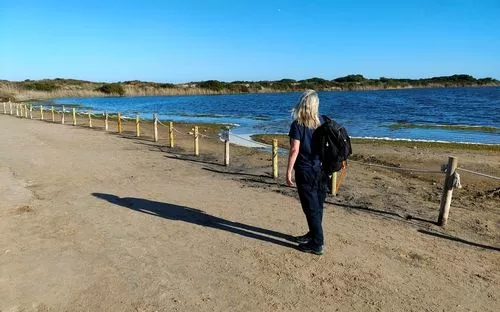
Walk through the paddy fields to La Muntanyeta Dels Sants – a pine-clad hillock with a chapel. Panoramic views from the top reach over the rice plains to L’Ullal de Baldoví lake. Several smaller ‘ullals’ (ponds formed by freshwater gushing up from subterranean lakes) can be seen nearby.
Circular route approx 12 km, 2h 30m.
Alternatively, hire a bicycle to explore more of the marshes or pedal along the coast to the Devesa dunes.
A 78 km cycle route circles the Albufera lagoon on paths through marshland and paddy fields, through coastal wetlands and forest, past villages, fishing docks and wildlife observation points.
A great idea is to get a bus to the City of Arts & Sciences, and then stroll through the Túria Gardens, a park that follows the old river bed to Valencia’s historic centre.
Nº 25 bus stops in El Perelló (by Consum supermarket) which makes travelling northwards, to El Saler or the City of Arts and Sciences, really easy. At 1.50€ a ticket each way, it’s simple and cheap to get to Valencia old town too, and no hassle with parking in the busy city centre.
City of Arts and Sciences (cultural and scientific complex)
It’s worth seeing the iconic, futuristic buildings even if you don’t plan to step inside! The Umbracle and Astronomy Gardens, and some temporary exhibitions are all free of charge. Oceanogràfic is the largest aquarium in Europe and there’s a daily dolphin show. Sharks, penguins, seals and belugas are just some of 500 species living in this water world. Hemisfèric is no ordinary 3D cinema. The massive digital screen shows a series of entertaining documentaries, kiddies programmes and other films, which you can watch in your own language. The interactive Science Museum and Palau de les Arts (opera, ballet, concerts) are the other top venues to enjoy.
Only 25 minutes south of El Perelló you’ll find Cullera, a large resort surrounded by orange orchards, rice fields, and sandy beaches. The castle fortress and holy sanctuary overlook the town from a high ridge chalked with ‘Cullera’ in huge letters (Las Vegas style!).
* For more information on El Perelló, what’s going on and local festivities see Hostal El Perelló Facebook Page, or for enquiries on accommodation speak to Veronika directly via Whatsapp +34 652 030 840.
Useful Info on Albufera Nature Park
When to Visit the Albufera Park
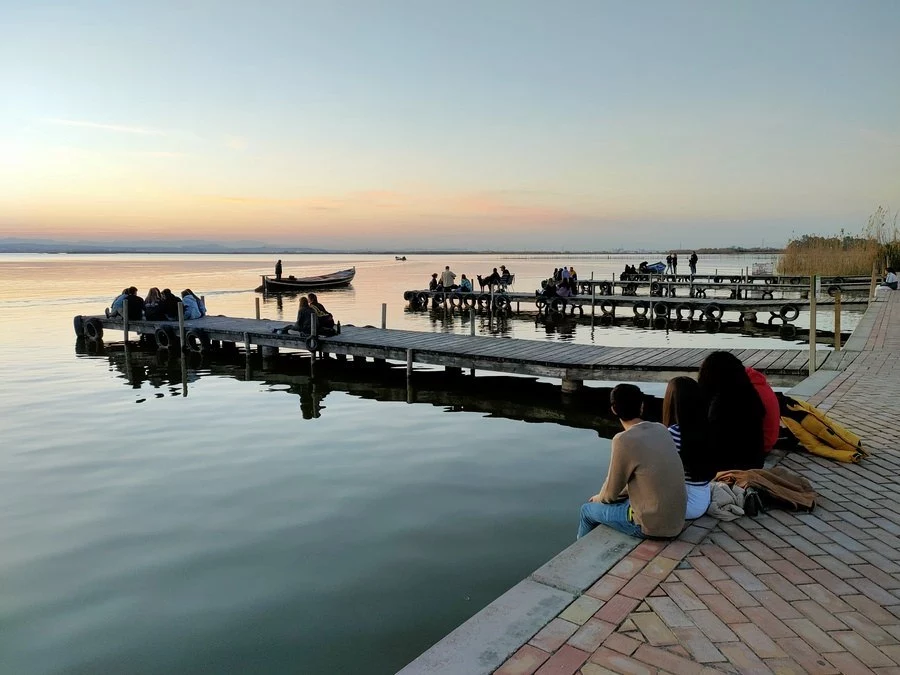
The Albufera landscape changes with the seasons…
In winter, flamingo flock to the flooded rice fields, waters merging with the deeper lagoon to create a vast aqua mirror reflecting the sky. February sees herons feeding on the muddy furrows after the land has been drained and churned. Springtime into summer, paddies are vibrantly green as seedling shoots grow, turning golden under as crops ripen for harvesting at the end of September.
Winters are mild in Valencia and the summers sunny and hot, with an average of 300 days of sunshine each year. Average temps of 30C during the day in summer, or 15C in winter means it’s a year round destination. Winter is ideal for walks and cycling, while the summer is ideal for relaxing on the beach or swimming in the sea.
June: Best month to enjoy hot weather without the crowds is June (month with most daylight hours). Rice fields are scenically green. Sea temperatures are warm.
July and August: Beach weather and the liveliest time of year. These are the busiest months as it’s summer holiday season.
September and October: Generally nice warm weather but there can occasionally be heavy rain storms.
November: Weather is changeable, temperatures vary but it’s relatively mild. Evenings will be cool.
December and January: Cooler months but often sunny. The rice fields are flooded and really picturesque.
February and March: Weather is changeable, temperatures vary. A good time to visit if you live nearby and come last minute on warm, sunny days. The fields are muddy but full of herons.
April and May: Will be busy at Easter. Variable weather but usually warm and bright.
How to Get to Albufera from Valencia
Nearest airport: Valencia (VLC)
By road: CV-500 coast road (El Perelló is 25 km south of Valencia).
EMT bus line 25: Porta De La Mar (Valencia city centre) – City of Arts & Science – El Saler – El Perelló (Consum supermarket)
EMT bus line 24: Porta De La Mar – El Saler – El Palmar
*Set price of 1.50€ one way. Pay the driver on board by card or cash (max. 10€ notes).
Metrobus line nº 190: Valencia – El Perello – Sueca
Popular Features on Nature Parks and Trails in Spain
Best Things To See In Sierra de Cazorla National Park
Sleepy villages with age-old traditions, historic castles with astounding views, and the lively market town of Cazorla itself, complete the varied landscape of this UNESCO biosphere reserve…
Are you ready for a trip to Sierra de Cazorla National Park, Spain?
See Mojácar and Cabo de Gata in Almería
From the white Moorish village in the hills of Almería, the sunlit view to the shimmering beaches of Mojácar, and Cabo de Gata nature park, is one of the most extraordinary sights in Spain.
Ricote Valley – Waterwheels, Spa & Peach Blossom in Murcia
The Ricote Valley is an authentic paradise in Murcia Province.
Waterwheels on the riverbank, orchards with fruit trees in blossom, and a hotspring spa.
Costa Blanca Walks and Mountain Hikes in Alicante
The Costa Blanca has some of the best mountain walks and coastal trails in Spain.
These are 11 of the most popular walks and hikes in Alicante Province.
Discover the World with ![]() the blog with a focus on independent travel.
the blog with a focus on independent travel.




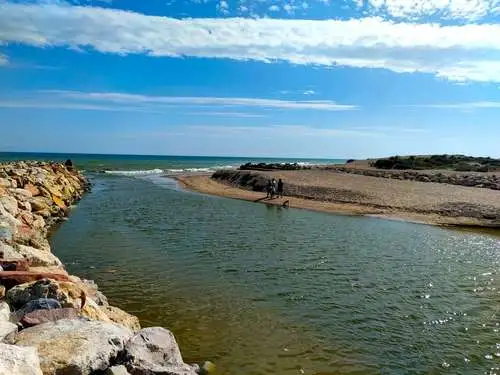
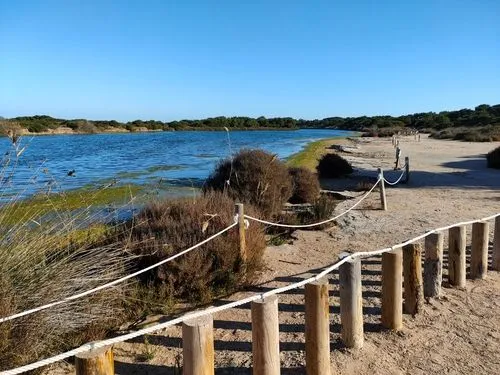
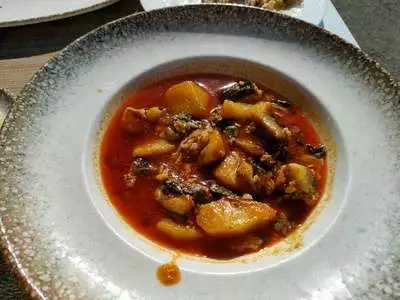
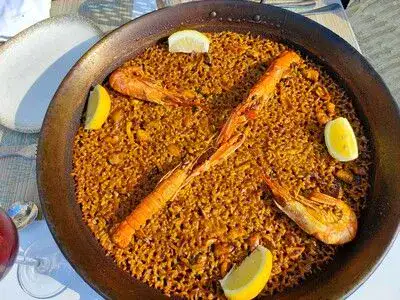
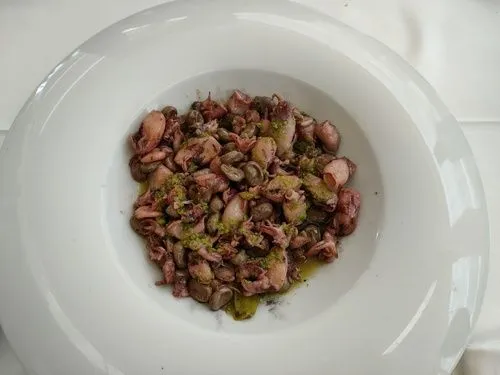
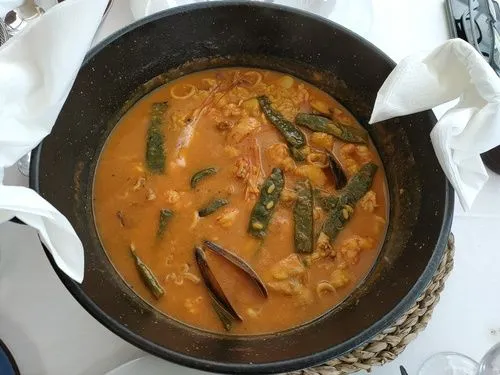
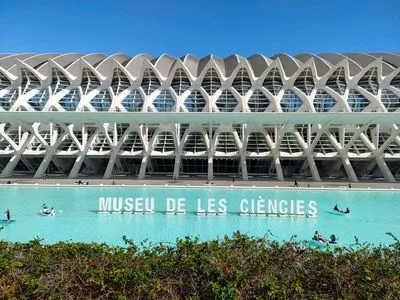


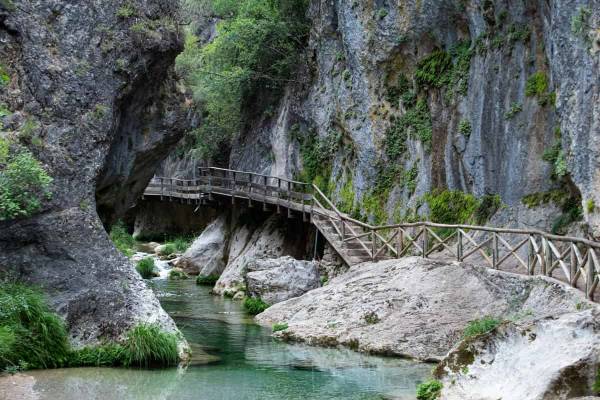
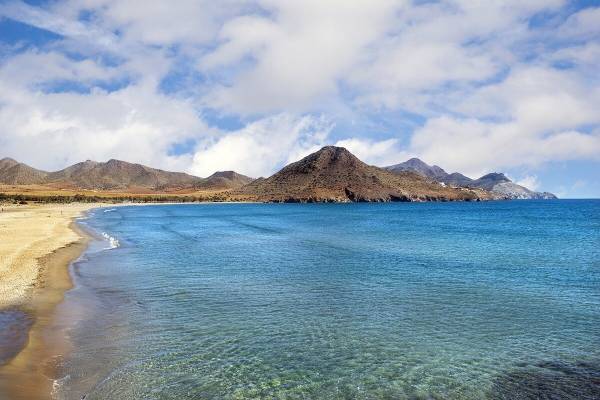
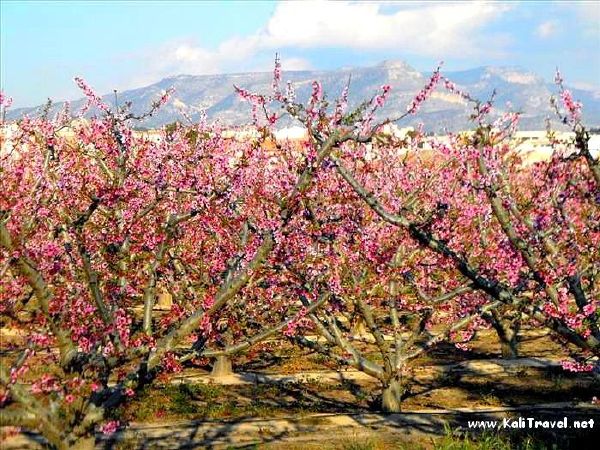
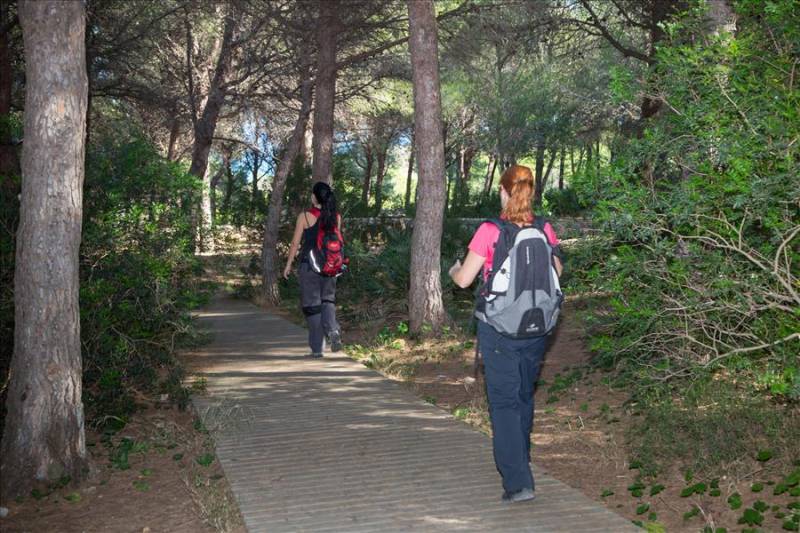
That sunset boat ride looks right up our alley. The views look stunning. Also great descriptions of the food. Seems like a great place to visit. Great post.
Albufera sounds like a great destination for a long weekend trip. I was thinking this must be a great place for seafood and after reading all the restaurant and food recommendations this was confirmed by this post! The sunset cruise would be a lot of fun. We try to do those when we can in places like this.
What a stunningly beautiful region. Interesting that the area is perfect for growing rice – it’s not surprising that paella is a speciality here. Love that traditionally everyone eats it directly from the pan. The entire cuisine sounds wonderful, especially the seafood. We would definitely love to visit.
This is such a great tip for an added adventure when visiting Valencia! Since I plan to visit Valencia this summer, I’m bookmarking this for later. Thank you so much! (Cannot WAIT for that paella!)
Lovely region one I’m keen on visiting soon . I enjoyed reading and learning about the local foods and of course the paella I love paella
Thank you for this introduction to Albufera! It looks like a wonderful region with a lot to offer. And I love a sunset cruise!
Great to read about a region of Spain I didn’t know anything about. Such beautiful photos too. And those different types of paella sound fantastic. Lots of reasons to visit here!